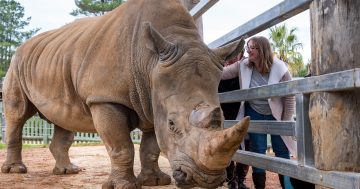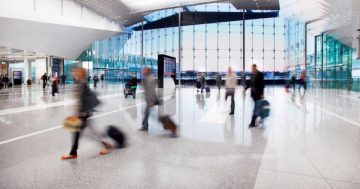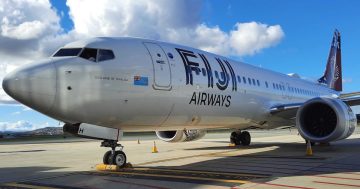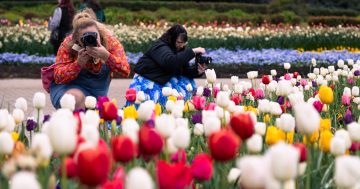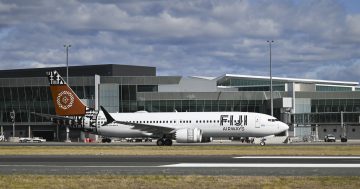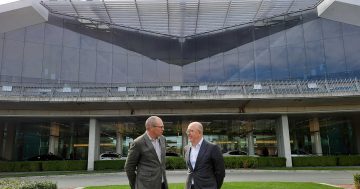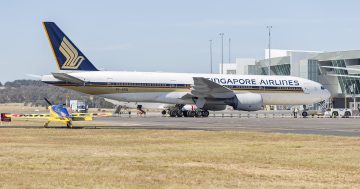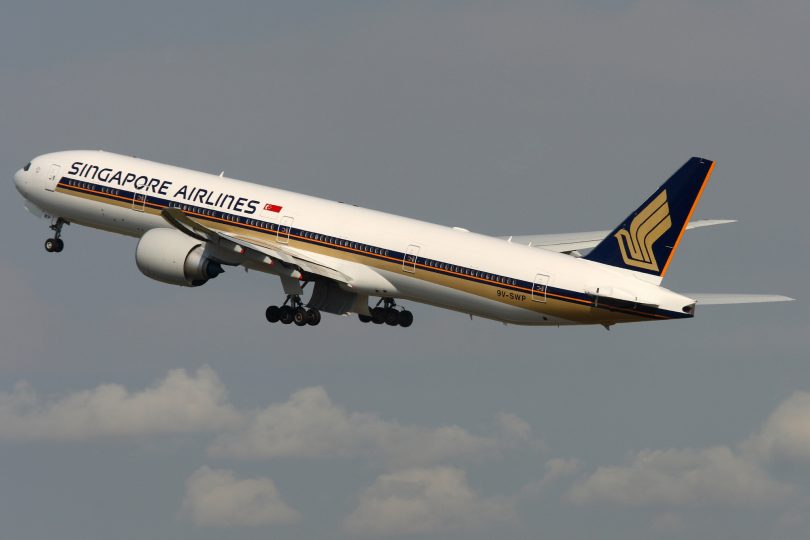
Daily services from Singapore Airlines and Qatar Airways have helped boost Canberra’s fortunes as an international tourist destination. File photo.
The ACT is attracting record numbers of visitors, both overseas and interstate, with the latest figures showing a combined total of 3,041,000 overnight visitors to the capital, contributing $2.37 billion to the local economy – a jump of $249 million compared to the same time last year.
The latest International Visitor and Domestic Visitor Surveys from Tourism Research Australia show 2,792,000 Australian and 249,418 overnight international visitors came to the capital for the year ending September 2018, up 3.1 and 9.4 per cent respectively.
International visitors are spending more while in the capital, with the figures showing an 18 per cent gain to $645 million, well ahead of the national average of 5.2 per cent. The spend by Australians also increased, up 9.6 per cent to $1.73 billion for the same period.
The average expenditure per trip by international visitors was up 8 per cent from $2401 to $2587, and the number of visitor nights increased 1.4 per cent from 5,133,000 to 5,204,000. But they are staying for slightly less time, with an average of 21 nights, down from 23, although they are spending an average of $124 a night, up 16 per cent from $107.
The ACT’s hotels continue to grow in popularity but the number of backpackers is falling.
There was a 10 per cent increase in the number of international visitors using commercial accommodation, from 128,000 to 134,000, and these travellers are spending 20 per cent more per trip and visitor night than the previous year. They injected $428 million into the region, up a substantial 31 per cent on the previous year’s figure of $325 million.
The number of backpackers dropped 12 per cent, from 33,000 to 29,000, and they are spending less time and money in the capital. Their visitor nights plunged 28 per cent and their spend in the region slumped 33 per cent, from $79 million to $53 million.

VisitCanberra Director Jonathan Kobus said an ongoing strong performance from the Visiting Friends and Relatives sector combined with record-breaking visitation from the business sector drove growth in domestic numbers.
Just over a million (1,006,000) were visiting friends relatives, while 774,000 were here on holiday and 863,000 were on business.
Mr Kobus said that while Sydney and regional NSW visitors made up the majority of visitors, there had been growth in the Victorian and Queensland markets likely connected to the commencement of low-cost domestic carriers like Tigerair.
The arrival of 14 international flights per week at Canberra Airport following Singapore Airlines’ move to daily flights from 1 May and Qatar Airways’ daily flights since February this year had also boosted overseas visitors.
“This has had a significant impact as ease of accessibility to a destination internationally is key to visitation growth for any city or region. Singapore Airlines provides access to a range of key Asian markets – Singapore, Malaysia, India, Hong Kong and China. Both airlines provide connectivity to major hubs across Europe and other parts of the world,” he said.
“The ACT Government continues to proactively market the destination to international visitors through VisitCanberra’s program of activities including travel trade events, travel trade and media
engagement and cooperative campaigns with online travel agents and Singapore Airlines.”
China continues to be the top source of overseas visitors (19.6 per cent), followed by the US (9.0 per cent), United Kingdom (8.4 per cent), New Zealand (8.0 per cent), India (5.3 per cent) and Germany (4.6 per cent).
Mr Kobus said Canberra’s status as Australia’s capital and its national attractions were important drawcards, as well as big events such as the upcoming cricket Test against Sri Lanka.
“Different aspects of Canberra’s offerings appeal to different markets but we find the ACT’s nature experiences and ‘city in a park’ status has broad appeal, as do experiences like hot air balloon rides, our food, wine and beer scene and iconic attractions such as Parliament House,” he said.
Mr Kobus said Canberra’s tertiary institutions also played an important role in driving international visitation, with parents and friends of students regularly visiting the capital.
Domestically, Canberra’s role was also acknowledged through the work of the National Capital Education Tourism Project (NCETP) which brings primary school aged children to visit Canberra, and was being expanded into international markets.
Mr Kobus said a resurgence in the number of new hotels being built in Canberra over the past few years had increased accommodation options.
“We have a number of new hotels under construction including an Adina Grand Hotel in the city – an indication of the confidence in our city’s offerings,” he said.
“Lower cost accommodation is also important and the opening of Canberra Park (which will expand further) and land earmarked for low cost accommodation such as at Stromlo Forest Park will give people more options.”
Mr Kobus said the ACT tourism industry was on track to meet its goal of growing the ACT’s overnight visitor expenditure to $2.5 billion by 2020. It was now $2.26 billion.
Nationally, there was also strong growth in the number of overseas visitors, with 6 per cent increase to reach 8.4 million in the year to September 2018, with the ACT and Tasmania leading the way. They spent a record $43.2 billion, up 5 per cent, although they are making shorter trips, staying 32 nights compared with 34 the previous year.
China continues to provide the most visitors, up 8 per cent to 1.3 million. China now accounts for 27 per cent of the total spend by international visitors on trips to Australia.
Visitor numbers increased from New Zealand, the US and the UK, up 3 per cent to 1.3 million, 736,000 and 699,000, respectively, while the number of Japanese visitors surged 6 per cent to 419,000.
Other big increases included India, up 20 per cent to 324,000, Taiwan (16 per cent to 187,000), Indonesia (6 per cent to 184,000) and Korea (3 per cent to 278,000).
The surge in overseas students has been a big driver in visitor numbers with the largest growth in expenditure during the year seen in education fees, increasing 10 per cent to $6.5 billion.
International airfares and shopping both saw a strong increase of 9 per cent to $9.6 billion and $4.1 billion respectively. Other key contributors included taxis and public transport, up 5 per cent to
$889 million while the spend on accommodation, food and drink increased 4 per cent to $12.9 billion.











